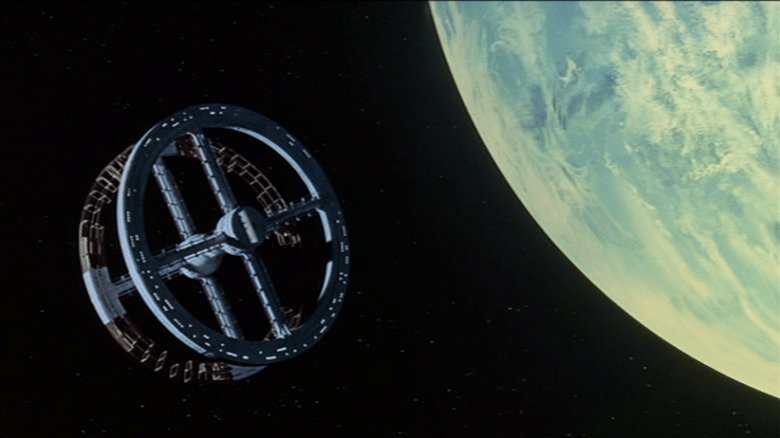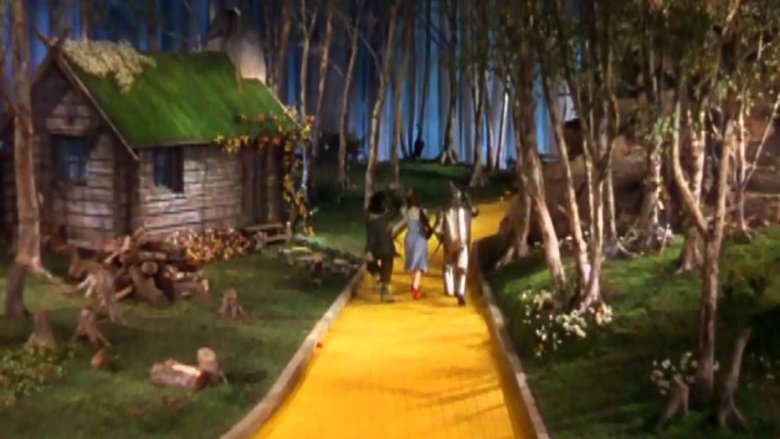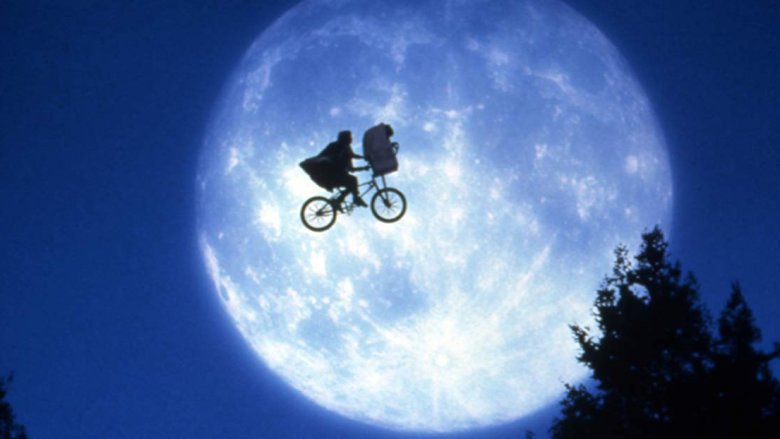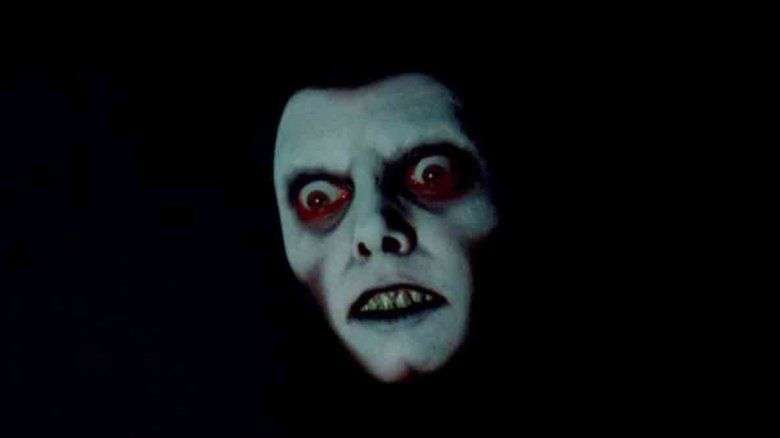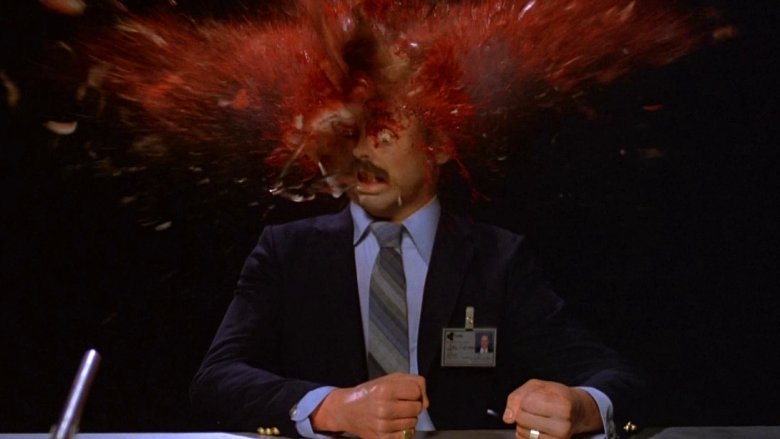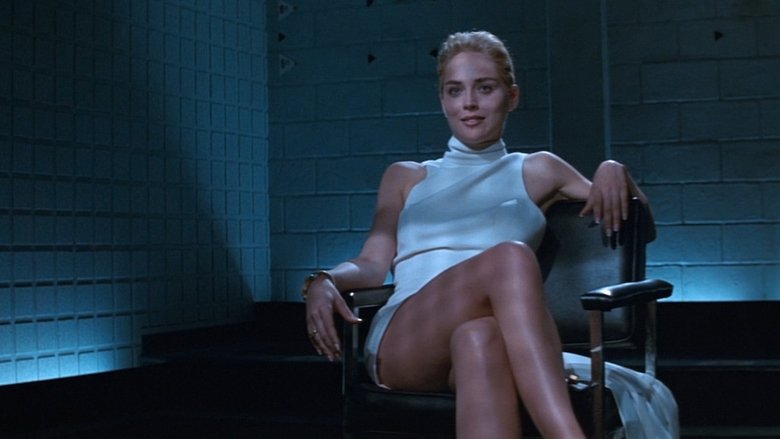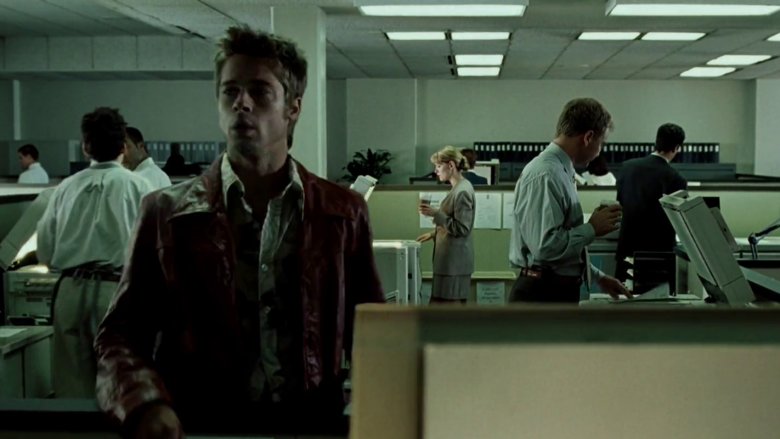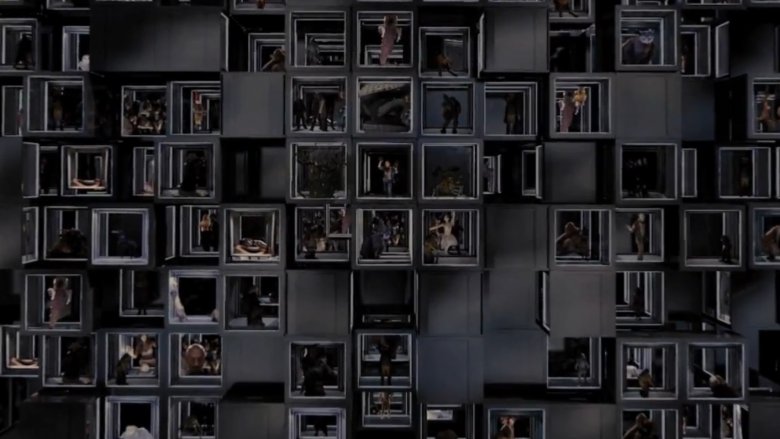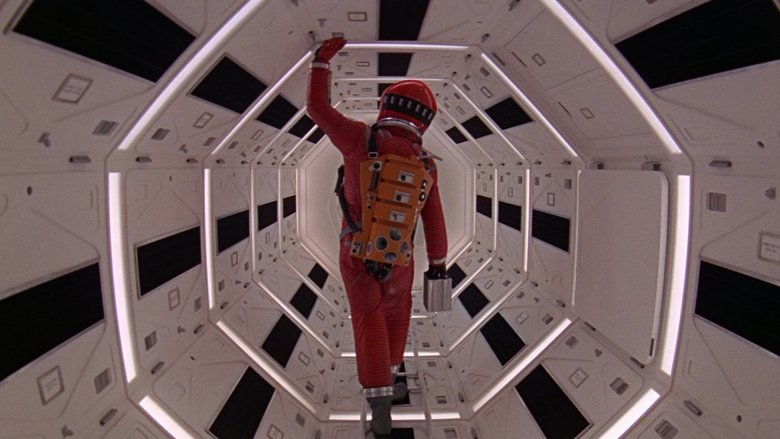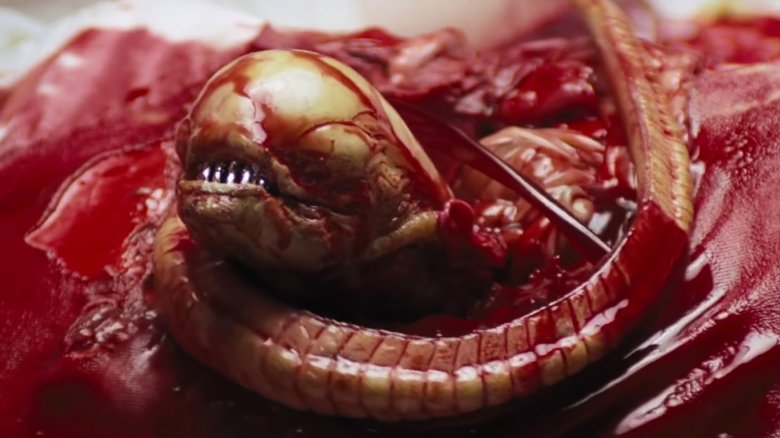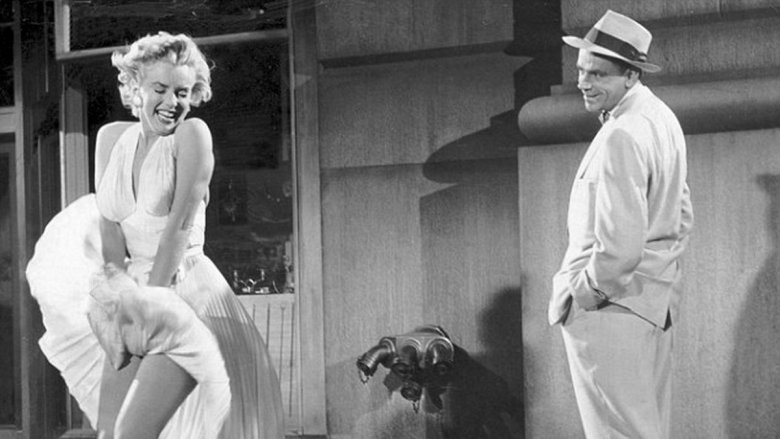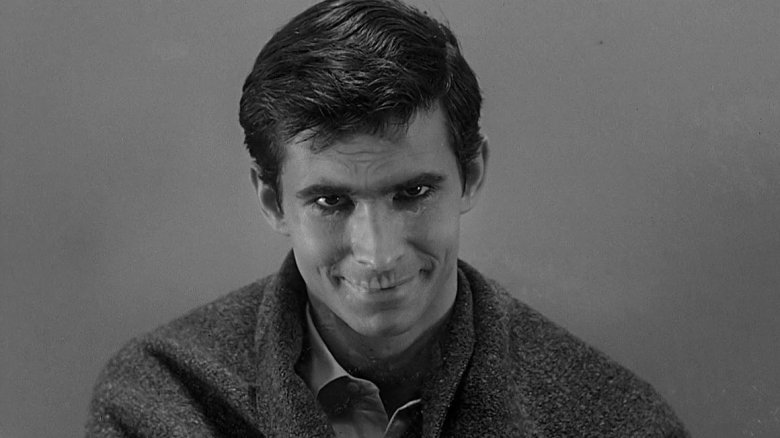The Most Paused Movie Moments Of All Time
When viewing a movie in its entirety, it's easy to forget that each film is made up of individual frames. For many directors, a few bad frames can spoil their entire creative vision, so they work exceedingly hard to craft each individual moment. Each singular image is paramount to crafting an end result that audiences can fall in love with.
Sometimes these individual moments are crafted with secrets hidden within. Other times these frames simply represent marvelous filmmaking. Whether a particular shot is simply a work of art or reveals more information about the story or the scene, certain movies feature moments so extraordinary that they have to be paused and closely examined.
From amazingly crafted aliens to more suggestive images, moments of impeccable shot composition, and even a few Easter eggs that add new meaning to their movies, these are some of the most paused moments in film history.
Maybe a Munchkin
The Wizard of Oz is often remembered for its charm, colorful characters, and emotional moments, but one of the most popular rumors about the film casts a dark cloud over an otherwise heartwarming story.
For years, it was rumored that after Dorothy and her small crew begin their journey to the Emerald City, a munchkin can be seen swinging from a tree in the background, indicating a cast member had committed suicide on the set. The rumor has been debunked many times — according to Snopes, the official explanation is that the shadow in question was just a bird on the set.
There are even a few clips purporting to be from an unedited cut of the film that show a munchkin hanging from a tree in the background of a shot. However, others claim that these clips are not originals and allege that their creators edited the bird out of the background and replaced it with a more ominous shape. With many viewers unsure of which story to believe, countless viewers have paused their copies to check for themselves.
E.T.'s freedom ride
Steven Spielberg's heartfelt story of the relationship between an extraterrestrial who makes his way to Earth and 10-year-old boy named Elliot has captured the hearts of generations since the film's release in 1982. In the film, Elliot must hide E.T. at his home to keep him safe from government agents who want to experiment on the alien. Eventually, E.T. is captured, and Elliot steals him away in an attempt to help his extraterrestrial friend get back to his home planet.
As Elliot and E.T. escape by bicycle, they're pursued by police and government agents; after a road is blocked, E.T. uses his telekinetic powers to lift himself and Elliot into the air. As the two glide in the sky, their silhouette can be seen against the white moon, creating a beautiful visual contrast and one of the most well-known shots in cinematic history. Embodying the boundless possibilities of youth, this classic shot has left its mark on countless viewers.
The devil you know
The Exorcist was a phenomenon that experienced unprecedented success in the horror genre. The film shocked audiences with its impressive effects, brilliant script, and eerie performances. One New York Times article detailing the throngs attending the premiere claims rumors circulated at the time of audience members throwing up, having heart attacks, and even miscarrying out of sheer terror. As Newsweek notes, The Exorcist was the first horror film to ever be nominated for Best Picture in the history of the Academy Awards.
When the film was made available for home video, many fans weren't just pausing to gawk at the infamous crab walking or vomit scenes. Plenty of others were pausing to see the face of Pazuzu, the demon possessing Regan. The face would only flash for a fraction of a second at odd points in the film, but that may not have been enough to keep Pazuzu from entering the nightmares of those who were unfortunate enough to gaze upon the demon's face.
A mind-blowing effect
Before the proliferation of computer animation in film, special effects were created using very elaborate practical solutions. It's an art that's been largely supplanted, but it isn't dead: Modern filmmakers famous for their use of practical effects include Guillermo del Toro, Peter Jackson, and Christopher Nolan, all of whom use techniques that hearken back to the pre-CGI era.
For an example of some of the finest practical effects work, look no further than horror icon David Cronenberg and his 1981 film Scanners, about a man with telekinetic abilities — a scanner — fighting to keep a shady corporation from weaponizing other scanners with the same abilities. When the corporation pits their scanner against the protagonist, the main character uses his telekinetic abilities to explode the head of the opposing scanner, and the gory explosion has fascinated viewers ever since.
In a DVD interview with the crew, the filmmakers revealed they made several heads from different materials before settling on latex and gelatin. The head was filled with corn syrup, leftover food, and spare pieces of latex, and the method of destruction was a shotgun fired at point blank range just out of view of the camera. The final result is possibly the best cranial explosion in film history — a short list, admittedly, but an impressive feat nevertheless.
An Instinct for controversy
Basic Instinct stars Sharon Stone as Catherine Tramell, an author of crime novels and the prime suspect in the murder of her famous boyfriend due to his murder closely resembling a murder in one of her books. As she is being investigated by Detective Nick Curran, played by Michael Douglas, the two begin an intense sexual affair.
The movie's full of steamy shots, but the most memorable occurs during the initial interrogation of Stone's character, when Tramell attempts to seduce her police interrogator by exposing herself while uncrossing her legs briefly. The shot became exceedingly popular on home video, but during interviews conducted during later years, Stone has claimed she wasn't made aware of how the shot was going to be filmed.
All controversy surrounding the film or the filmmaking aside, Basic Instinct made Stone one of the biggest stars of the early '90s — and that scene includes one of the most paused moments of the decade.
The first rule of pausing Fight Club
David Fincher's 1999 classic Fight Club has enthralled millions with its social commentary and its blistering examination of masculinity and materialism — not to mention the twist ending, which threw many for a loop on their initial viewing.
Edward Norton plays a depressed office drone who reinvigorates his existence by living with a soap maker named Tyler Durden (Brad Pitt) in his decrepit house and joining a secret society where men get into recreational fist fights with the sole purpose of feeling something. The Fight Clubs are run by Tyler, who appears to be everything that the main character wants to be in life yet isn't.
However, before the narrator becomes fixated on Tyler Durden and participating in Fight Club through his eyes, audience members can get a few very brief glimpses of Durden before he comes into the narrator's life. Only appearing for a couple of frames at a time, Pitt appears in several scenes in the beginning of the film — but if you aren't quick with that pause button, you're likely to miss him.
Monster party
The horror film Cabin in the Woods imagines a world in which annual ritual sacrifices to ancient beasts are required to keep the destruction of the world at bay — a plan carried out in secret by members of a shadowy organization who manipulate their victims from an underground lair. One such sacrifice forms the basis of the plot, which begins when a group of friends arrive for a weekend at a seemingly remote cabin in the — you guessed it — woods.
The plan fails when two of the would-be sacrifices, Dana and Marty, survive and eventually find their way into the facility. Once inside, an assortment of all the potential monsters that could have been used for the ritual can be seen onscreen. This scene has fed speculation from fans about which monsters can be identified and the methods that each creature would employ to ensure a successful sacrifice. Other parts of the film highlight different creatures, but this is the scene with the largest variety of horrors onscreen, so it's naturally become a source of particular fascination for those who like to imagine how past sacrifices may have been accomplished.
Kubrickian symmetry
Stanley Kubrick's directing style is easily identifiable due to his consistent, symmetrical framing and camera perspectives. H also used one-point-perspective, allowing for focus on a specific character or object of interest.
For a particularly striking example, watch 2001: A Space Odyssey. In one particular scene, the film's main character Dave Bowman is center frame and surrounded by white lights in an octagonal hallway. By positioning his subject this way, Kubrick creates the sense that the viewer is directly behind Bowman, making the audience feel more a part of the story.
In addition to the framing, another visually striking part of this shot is the attention to color and value. The ship is brightly lit and framed in stark black and white, showing that there is no place to hide in this idyllically pristine environment. Bowman is in stark contrast, wearing red and orange. This visually parallels him with the ship's artificial intelligence, HAL 9000, who is shown as a red dot against a black background on the console.
Bursting with excitement
Alien is filled with incredible sci-fi action from start to finish, but the chestburster scene is arguably the most memorable. We begin with the crew peacefully enjoying a meal, only to be abruptly interrupted when John Hurt's character starts violently coughing. After a few moments of convulsing, an alien creature bursts from his chest, spraying the room in blood and shocking his fellow crew members.
Up until this point, we haven't been introduced to aliens outside of the facehuggers that initially latched onto Hurt's character. The baby Xenomorph is the audience's first real introduction to the horrors that await the crew, and the scene also showcases the destructive abilities of the alien creatures.
So many elements of this scene have caused viewers to pause: everything from the gory effects to the alien and the looks of horror and disgust on the other actor's faces. This classic hit spawned a franchise for a number of reasons, and the terror expertly inflicted during this scene ranks near the top of the list.
Marilyn's Itch
Billy Wilder's The Seven Year Itch is a romantic comedy about Richard Sherman, a husband and father who fears succumbing to relationship restlessness. According to a doctor in the film, after seven years of marriage, men become more likely to have affairs.
Marilyn Monroe plays a character simply named "The Girl" who lives in the apartment above Sherman. Naturally, the bedeviled Sherman can't help himself from starting to fantasize about Monroe — and fearing how his wife would react to his thoughts of infidelity.
The classic image of Monroe standing above a subway grate, holding her dress down as it flies upwards, is one of the most iconic images in cinematic history. The shot is so popular that even people who haven't seen the film and might not even know about it are familiar with the image of Monroe in her most iconic pose.
Normcore
Alfred Hitchcock's Psycho is known for the infamous shower scene and twist ending, but a subtler message is conveyed in the final moments of the film.
Throughout the movie, the audience has been exposed to the evil deeds of Norman Bates, a reflection of a warped psyche that belies his ordinary appearance. In the final act, the true depravity of Bates and his psyche is shown to the audience, but the overt record of what he has done isn't the only indication of Bates' evil.
At the end of the film, Bates looks directly into the camera. In this chilling moment, a skull can be seen briefly as it is superimposed over his face. The shot is subtle, but it serves to reinforce the association of Bates with death — and it also can be read as showing his true nature. He is stripped down to the bone and can be seen on a fundamental level after his secrets are shown.
